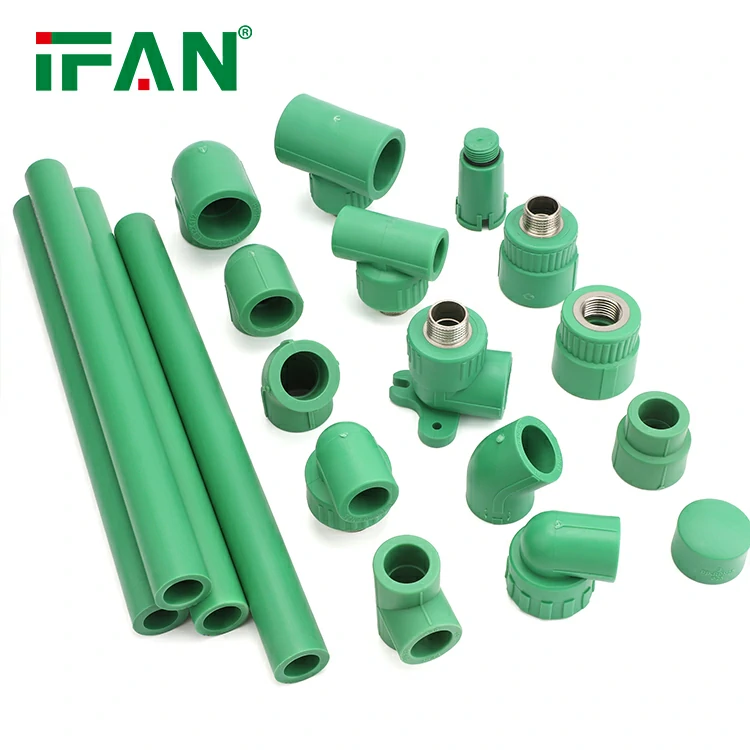Introduction to PPR Fittings
PPR Fitting is widely used in plumbing and water systems.
It is made from polypropylene random copolymer.
The material is known for heat and chemical resistance.
These qualities make it popular for indoor piping networks.
But many users wonder about its outdoor performance.
Outdoor installations face UV rays, temperature shifts, and moisture.
This article explores whether PPR Fitting handles such exposure.
We examine durability, limitations, and best-use practices.
Understanding this helps avoid system failures and costly repairs.
Material Properties of PPR
PPR Fitting has excellent resistance to heat and pressure.
It performs well in both hot and cold water systems.
Its smooth interior surface reduces friction and limescale buildup.
It is corrosion-resistant and does not react with most chemicals.
This makes it safe for potable water systems and chemicals.
However, PPR Fitting is sensitive to prolonged UV radiation.
Its surface may degrade and lose strength over time.
This is a key concern for outdoor exposure scenarios.
The Effects of Sunlight and UV
Direct sunlight contains UV rays that damage polymers.
PPR Fitting may become brittle or discolored outdoors.
UV exposure reduces mechanical strength and life expectancy.
Cracks may form, leading to leaks or pipe failures.
In areas with strong sun, damage appears faster.
For example, tropical and desert regions increase risk.
Therefore, manufacturers advise protection from direct UV exposure.
This can include painting, insulation, or shaded placement.
Temperature Extremes and Outdoor Durability
Outdoor systems face extreme temperature fluctuations.
PPR Fitting handles hot water up to 70–90°C.
But freezing conditions can cause it to crack.
If water inside freezes, pipe expansion causes rupture.
In high heat, pressure ratings may decline slightly.
So climate plays a big role in outdoor performance.
In mild climates, PPR Fitting can last many years.
But in harsh zones, additional measures are recommended.

Protective Measures for Outdoor Use
PPR Fitting can be used outdoors with precautions.
UV-resistant coatings or paint extend its lifespan.
Black polyethylene insulation sleeves offer thermal and light protection.
Burying the pipe underground is another good method.
Install in shaded locations when possible, like under roofing.
Some use metal or PVC ducts for extra shielding.
Avoid exposing fittings directly to weather without cover.
Periodic inspection helps detect early signs of UV damage.
Real-Life Outdoor Applications
PPR Fitting is used in some outdoor systems successfully.
Agricultural irrigation setups often use protected PPR lines.
Also, garden water supplies with shaded routing use it.
In hotels or resorts, concealed outdoor plumbing works well.
For example, underground pool water returns use PPR pipe.
When properly shielded, it performs reliably for many years.
However, exposed installations in direct sun show deterioration.
So success depends on protection, not just the material.
Comparing with Other Materials
Other outdoor pipe options include PVC, CPVC, and PE.
PVC is cheaper but less tolerant to high temperatures.
CPVC resists heat better, but can be brittle in cold.
PE pipe is flexible and excellent for buried use.
PPR Fitting stands out in long-term pressure and corrosion resistance.
But it needs UV protection to match outdoor durability.
Each material has advantages depending on the environment.
Choosing the right pipe needs technical and location consideration.
Final Recommendation
PPR Fitting is suitable for outdoor use with care.
It must be shielded from sunlight and freezing.
Proper installation techniques prevent early failure or damage.
Use coatings, insulation, or bury the system underground.
Inspect annually for cracks, leaks, or UV-related wear.
If installed correctly, PPR Fitting can last 20–50 years.
Its reliability depends on how well it’s protected.
With planning, PPR Fitting is a strong outdoor option.

